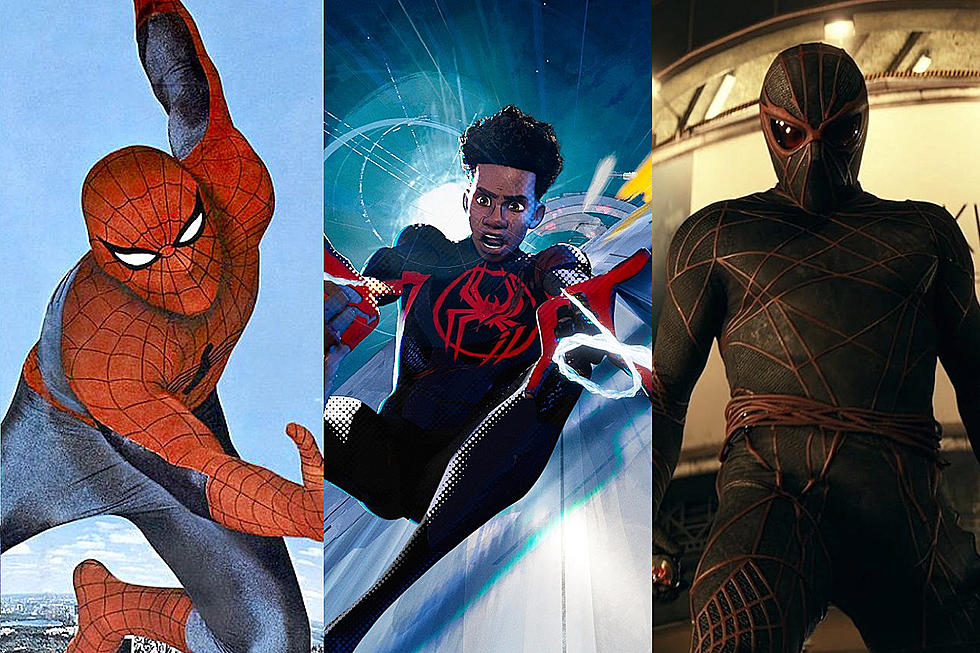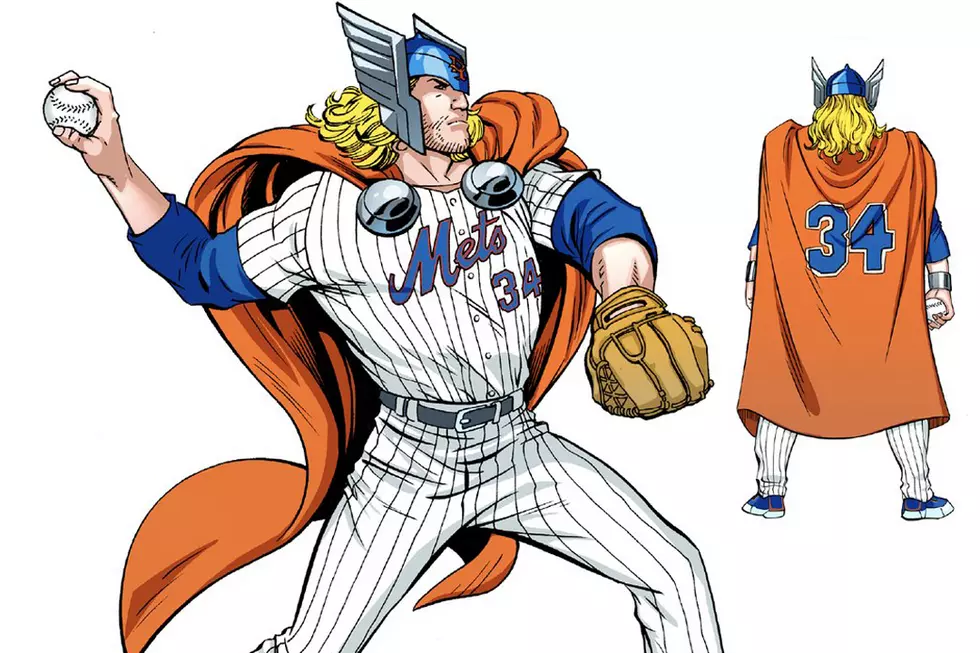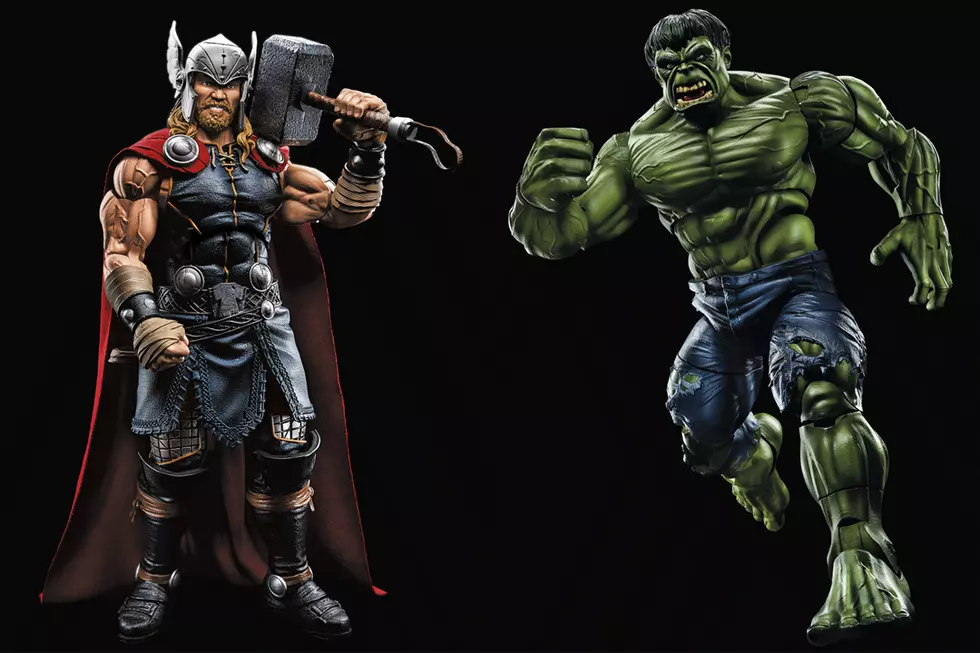![If He Be Worthy: Does Walt Simonson’s ‘Thor’ Live Up To Its Reputation? [Fantasy Week]](http://townsquare.media/site/622/files/2015/09/Simonson01.jpg?w=630&h=420&zc=1&s=0&a=t&q=89&w=980&q=75)
If He Be Worthy: Does Walt Simonson’s ‘Thor’ Live Up To Its Reputation? [Fantasy Week]
While it may be overstating the case to describe superhero comics as our modern myths in a post-religious age, there are certainly some stories that have taken on a near-mythic quality as "the stories you have to read": Watchmen; The Dark Knight Returns; All-Star Superman; The Death of Captain Marvel; "The Night Gwen Stacy Died." These stories are held in high esteem, often for a generation or more.
For Fantasy Week here at ComicsAlliance, I wanted I'd dive into a run that's not only held up as one of the defining Marvel stories of the 1980s, but also the high point of its particular character's history. I wanted to know: is Walter Simonson's legendary four-year run on Thor, and the stories related to it, really that good, or just fondly remembered by the people who read it as kids?
To get the answer, I plunged into Marvel Unlimited and went all the way back to 1977 and Thor #260, when SImonson took over as penciller, working with writer Len Wein, inker Tony DeZuniga, colorist Glynis Wein and letterer John Costanza.
For this penciller-only run from #260-#271, Simonson had a bit of a task ahead of him. He came in to the middle of a story arc in which Thor, Sif, the Warriors Three, and a very literally-minded robot known as The Recorder had been sailing the galaxy to find the missing Odin. And I mean that literally: they were sailing in a Viking ship through space.
Their quest brought them to a doomed mechanical planet, and the last members of a dying race. Coming on as artist, this allowed Simonson to show off his love of, and skill for, depicting alien monsters, settings, and distant stars. It's that same skill he'd show later with his work on Marvel's classic Star Wars series and he acquits himself admirably here. The staggering beauty and scope of his art is so monumental that it helps elevate some average scripts from Wein, who leans way too heavily on making the same fat jokes about Volstagg for my liking.
Simonson's space skills, as is immediately evident, also owe a huge debt to Jack Kirby (he even gets some Kirby Krackle in there). Like his artistic idol, Simonson knows how to make the utterly alien completely comprehensible and yet incomprehensible at the same time. It's the same sort of paranoid energy that Kirby brought to stories like "The Galactus Trilogy."
It's fittingly, then, that when he took over as sole writer/artist with #337 in 1983, he leaned heavily on cosmic imagery.
And not just cosmic imagery either. But creation imagery. In depicting, repeatedly, over his first several issues, the forging of the sword Twilight by the incalculably ancient fire-demon Surtur, Simonson draws on both Kirby and a long artistic history of the fires of creation that stretches back centuries.
It's a thunderous statement to open with: this is a new kind of Thor. One you haven't seen. And it truly is. For it's in this issue that we also get the origin of Beta Ray Bill, a cyborg space horse who manages to lift Thor's hammer and gain his power, something no one had ever done before in Marvel history.
With that dramatic shift in status quo, Simonson marks his own era as a distinct shift from his work with Wein. That run has a lot of fun cosmic stuff, ending with a big Avengers team-up that's pretty great . But Simonson's solo work is, to use a horribly over-used word, epic. It's grand space opera like the Fantastic Four before it, but also human and intimate like Spider-Man. That's no small feat when you realize that, while most Marvel books at this time only had to show one corner or so of NYC, Thor had to portray an entire cosmos all on its own.
Not only does Simonson, alongside colorist George Roussos and letterer John Workman Jr., manage to balance Thor and his adventurous spirit, Beta Ray Bill and his lonely J'onn J'onzz-esque quest through existence, and the adventure and comedy of the Warriors Three, he also manages to make all these gods completely human. So good is he at characterization that when great, sweeping moments like Balder the Brave taking up the sword in spite of his newly-found pacifism, or the Executioner standing alone at Gjallerbru, mowing down demons with M-16s so Thor's army can ride out of Hel, they're not just great moments of action. They're also dramatic and striking character beats that feel like a natural part of the story, and specifically that character's journey in that story.
Something I wasn't expecting here, but was utterly charmed by, was Simonson's sense of humor. There's the usual fish-out-of-water stuff that comes with Asgard's warriors being temporarily stranded on Earth after the end of the Surtur saga --- in particular, there's a great bit in #355 where Volstagg discovers the wonders of Teflon inside of Macy's --- but there's also some fun lampshading.
Early on, Simonson wisely ditches what had been a plot device and convention of Thor since the very beginning: his mortal identity of Dr. Don Blake, whom he reverts to if separated from Mjolnir for sixty seconds. Instead, he has Thor get set up in a new civilian identity by Nick Fury along with a construction job at a site run by Nick's cousin. Moments after assuming his new identity of "Sigurd Jarlson," Thor bumps into, I kid you not, John Byrne's Clark Kent.
There's also a great bit where one of Thor's mortal allies hears someone talk about Thor and Sigurd being one and the same, and he's perplexed. "Everybody was fooled by Thor's disguise!" he thinks. "That's how secret identities work!" And here you thought Grant Morrison invented meta-commentary in superhero stories.
Simonson also, like the best Big Two writers, subtly weaves the shared universe into the book without derailing his own ongoing plots. The crossovers with Secret Wars II and "The Mutant Massacre" not only function as good tie-ins, they also further Simonson's epic plot.
I should note that Simonson didn't draw every issue he wrote, with his last year seeing him handing pencilling duties over to Sal Buscema. But the transition is so seamless and the two's styles gel so perfectly together that you'd be hard pressed to really notice.
Buscema also drew the Simonson-penned Balder The Brave four-issue miniseries, an epic tale that weaves in and around Balder accompanying Thor to Hel, and mixes fun adventure with a note of noble tragedy. And while Sif doesn't get her own spin-off, she does get better characterization in these comics than she's had in two movies and at least one Agents of SHIELD episode.
Though these comics are more than thirty years old, it's safe to say that their reputation as one of the definitive Marvel runs --- and the definitive run on Thor --- is intact. From valiant heroes to to melodramatic romance, and from shocking plot twists to really funny comedy (Volstagg is the Best Dad in comics), Simonson's Thor run truly is the stuff of legend.
Walt Simonson's Thor has been collected in five volumes from Marvel comics, and is also available digitally on Marvel Unlimited. Simonson continues to explore the stories of Norse gods in his own creator-owned series Ragnarok. Check out five reasons to read that series here.
More From ComicsAlliance




![Comics’ Sexiest Female Characters (From A Queer Perspective) [Love & Sex Week]](http://townsquare.media/site/622/files/2017/02/hg_featured.jpg?w=980&q=75)

![Comics Alliance Rates The Avengers Hunks [Love & Sex Week]](http://townsquare.media/site/622/files/2017/02/marvelhunks-feat.jpg?w=980&q=75)


